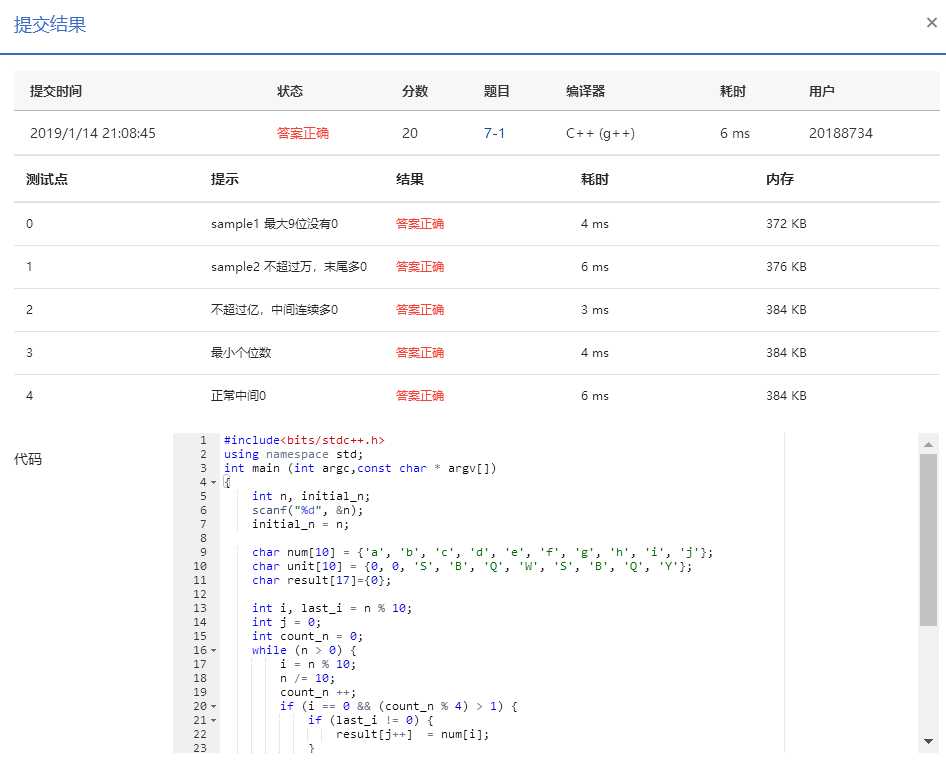1.实验代码
#include<bits/stdc++.h> using namespace std; int main (int argc,const char * argv[]) { int n, initial_n; scanf("%d", &n); initial_n = n; char num[10] = {‘a‘, ‘b‘, ‘c‘, ‘d‘, ‘e‘, ‘f‘, ‘g‘, ‘h‘, ‘i‘, ‘j‘}; char unit[10] = {0, 0, ‘S‘, ‘B‘, ‘Q‘, ‘W‘, ‘S‘, ‘B‘, ‘Q‘, ‘Y‘}; char result[17]={0}; int i, last_i = n % 10; int j = 0; int count_n = 0; while (n > 0) { i = n % 10; n /= 10; count_n ++; if (i == 0 && (count_n % 4) > 1) { if (last_i != 0) { result[j++] = num[i]; } } if (count_n == 5 && i == 0 && initial_n < 100000000) {result[j++] = unit[count_n]; } if (count_n > 1 && i != 0) {result[j++] = unit[count_n];} if (i != 0) {result[j++] = num[i];} last_i = i; } if (initial_n == 0) { result[j++] = num[i];} for (j=j-1; j>=0; j--) {printf("%c", result[j]);} cout<<endl; return 0; }
2.设计思路
先用循环把位数和每一位提取出来,然后对应之前设好的字符数组的中的字母一一打印。
3.实验过程中遇到的问题
一个特殊情况不超过亿中间连续多0的情况未考虑。
4.运行结果截图

原文:https://www.cnblogs.com/xiangqi/p/10411936.html